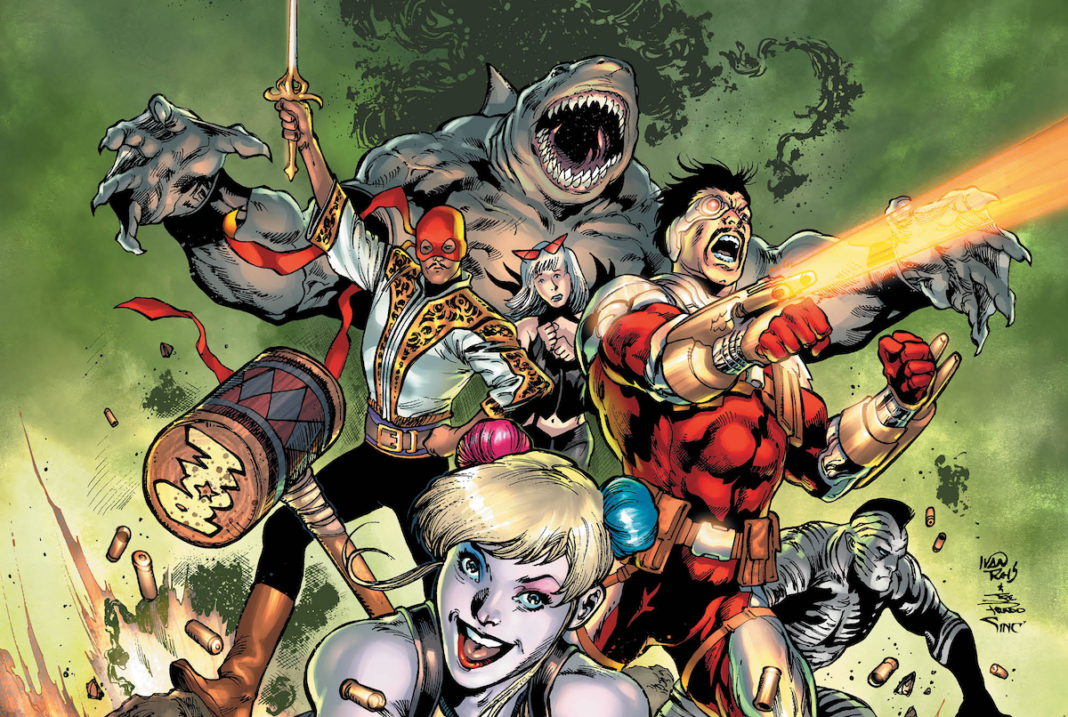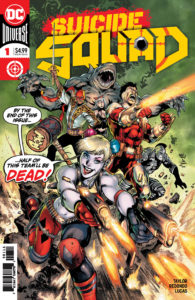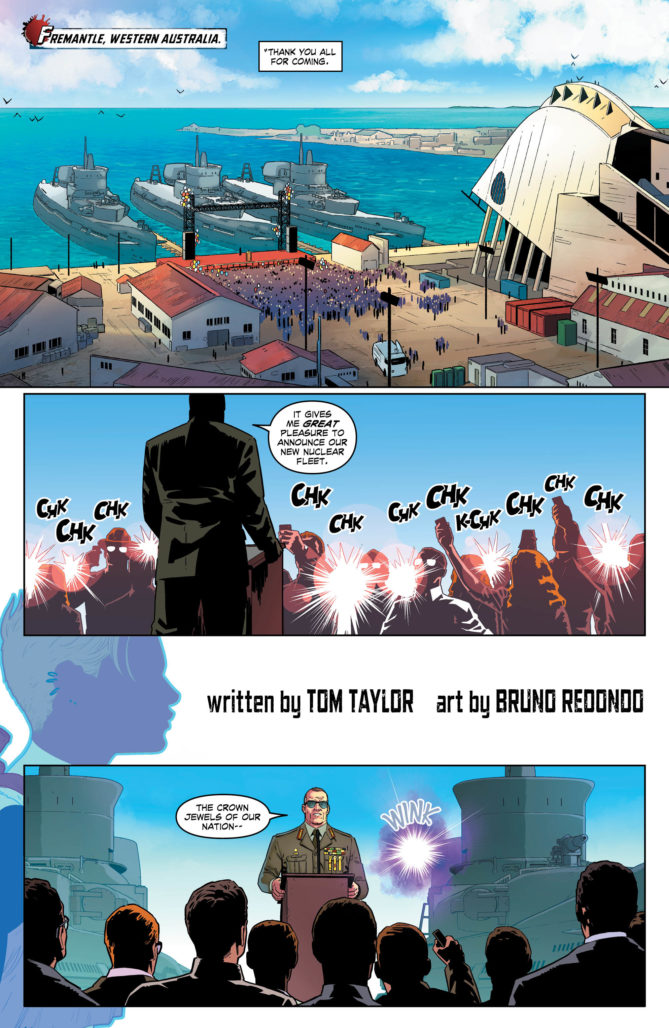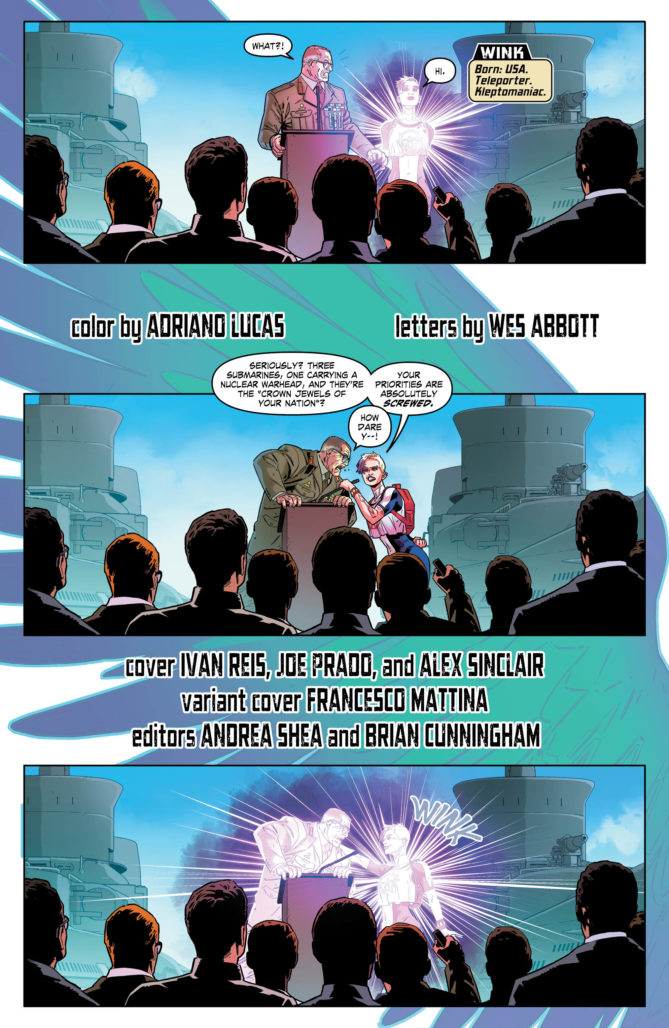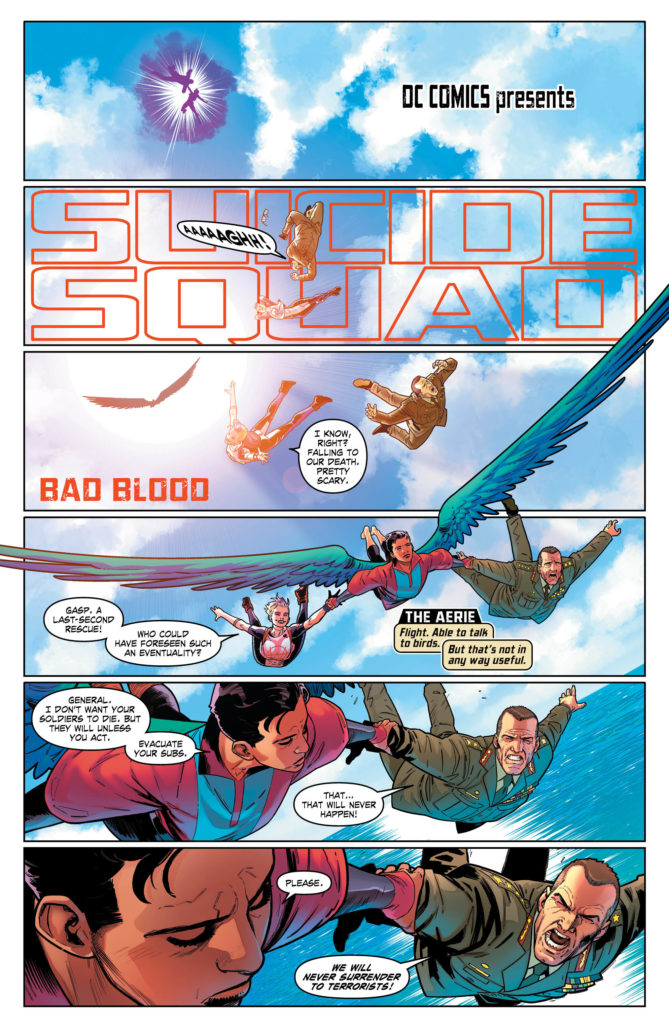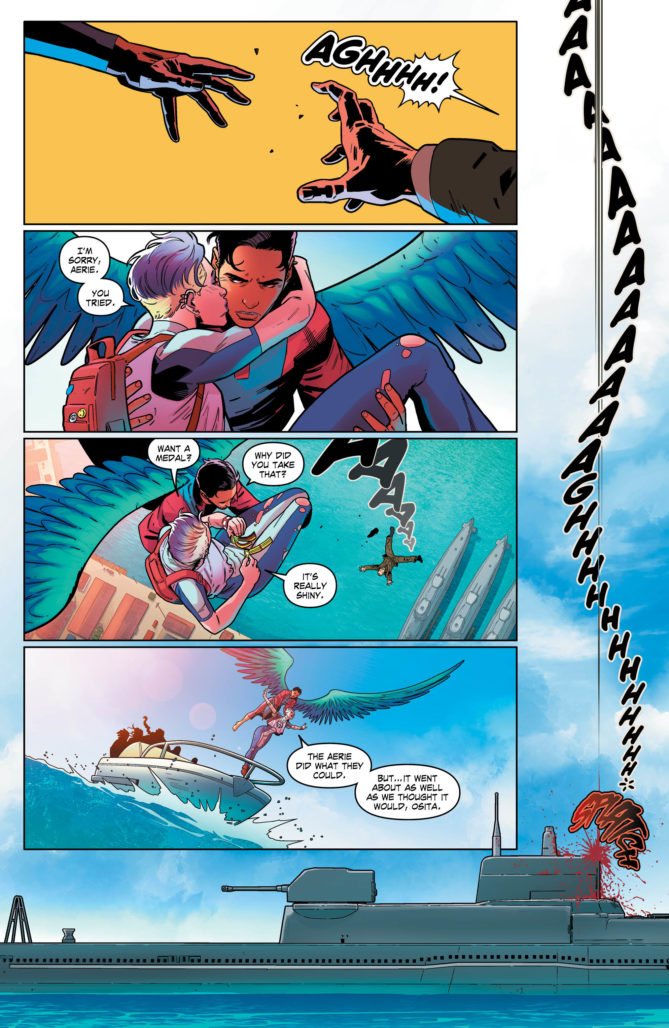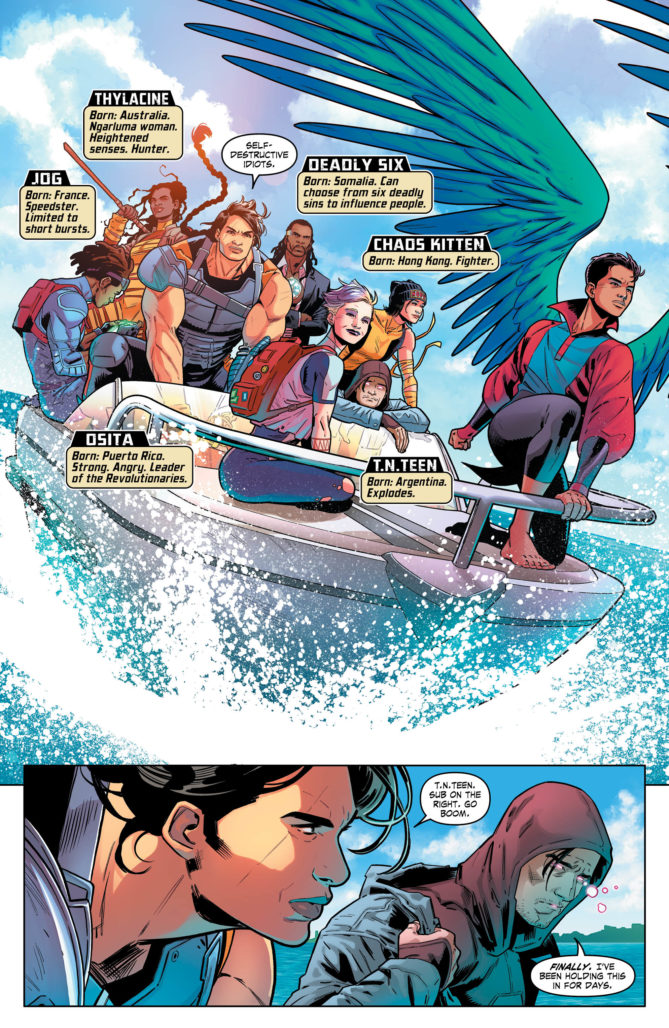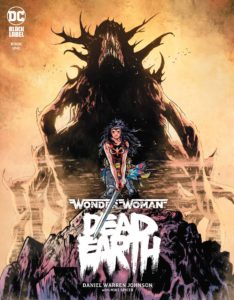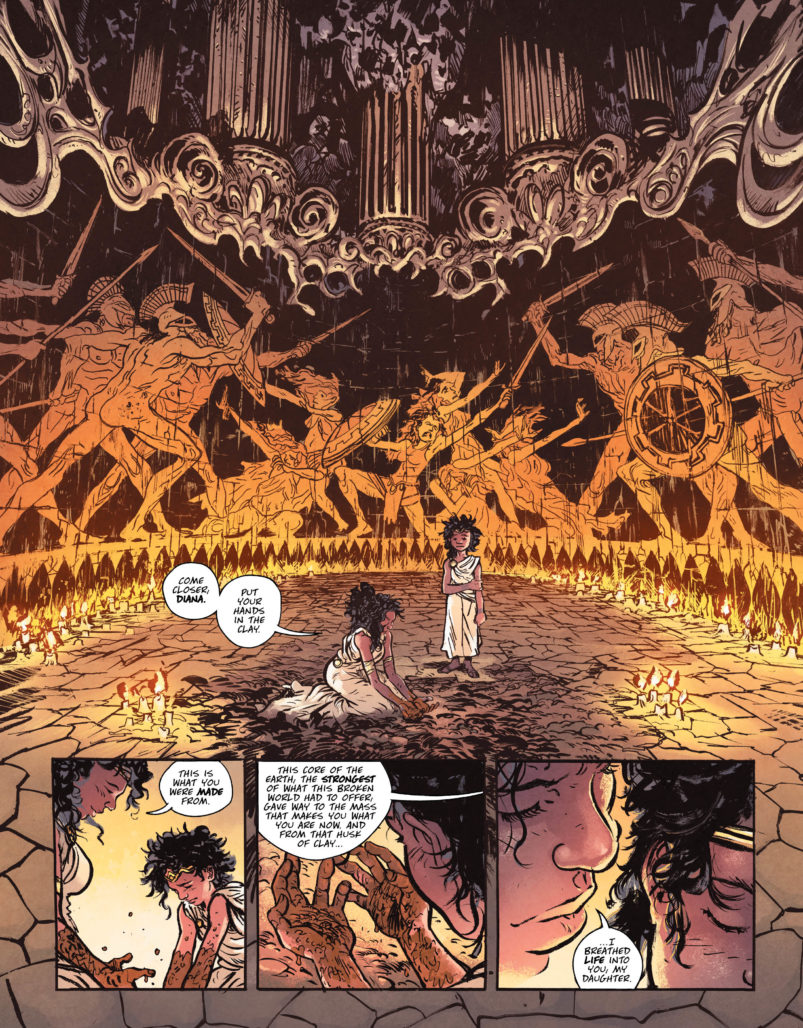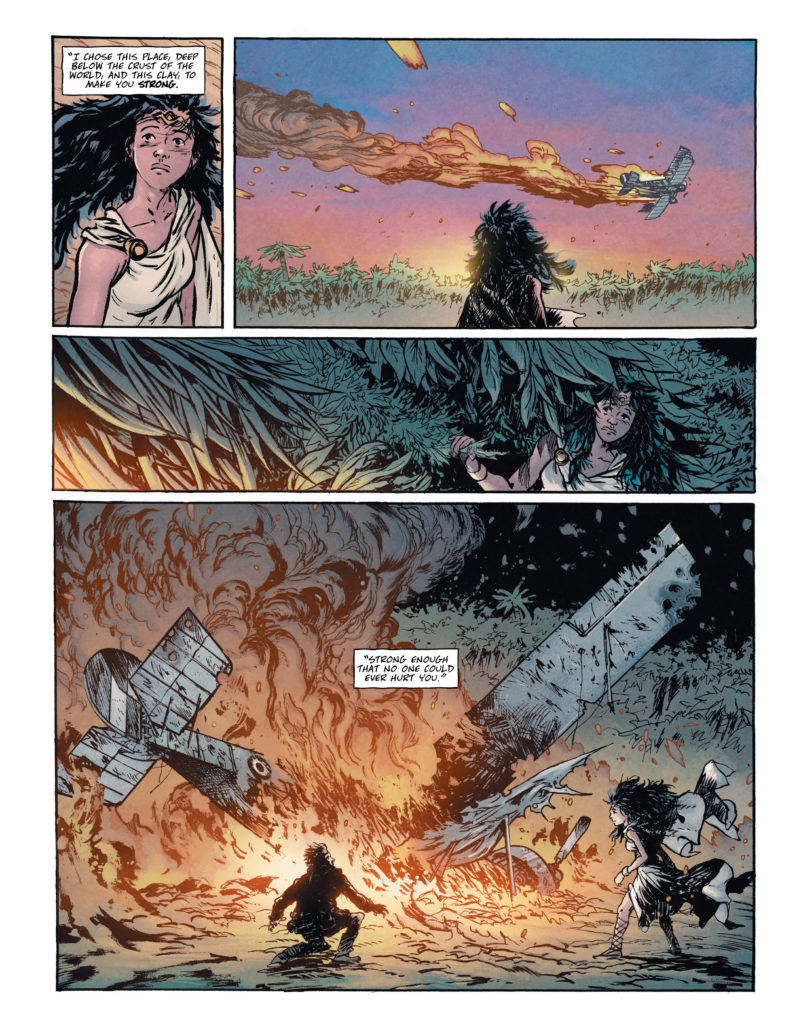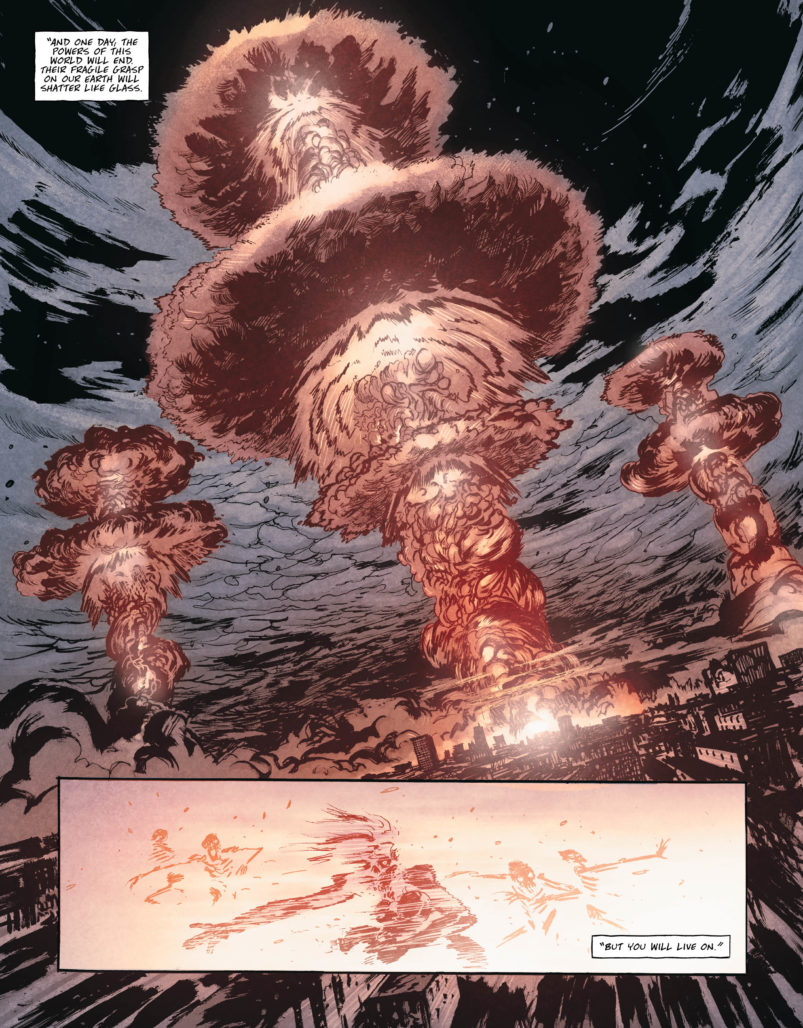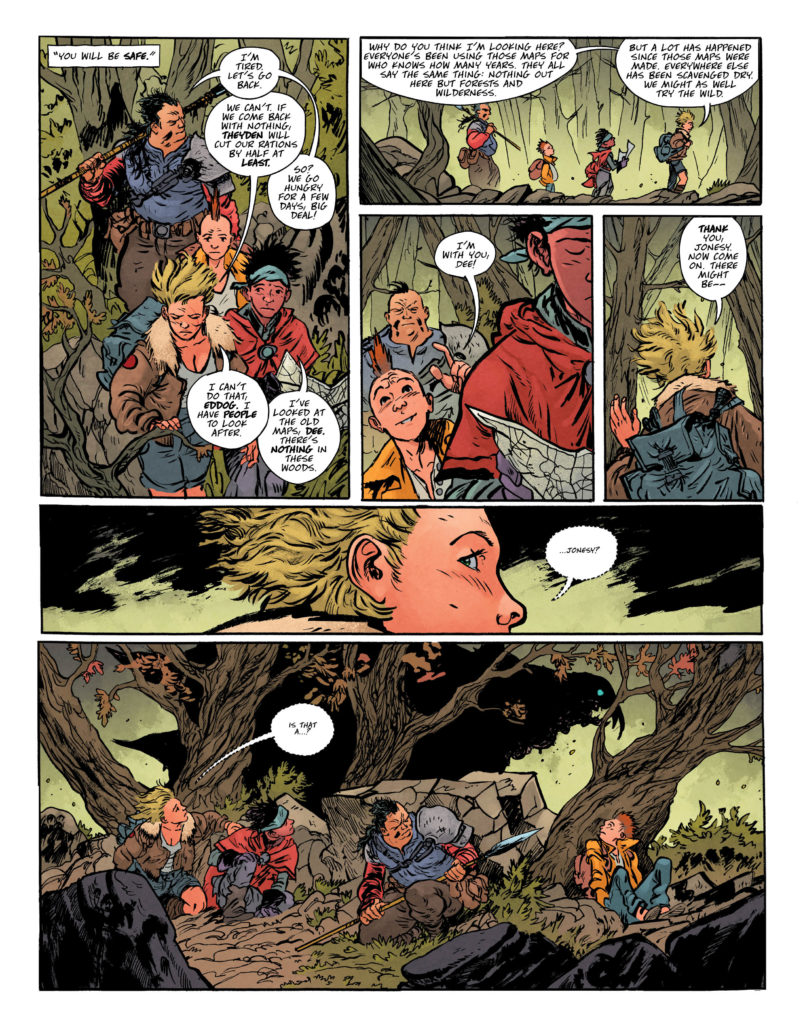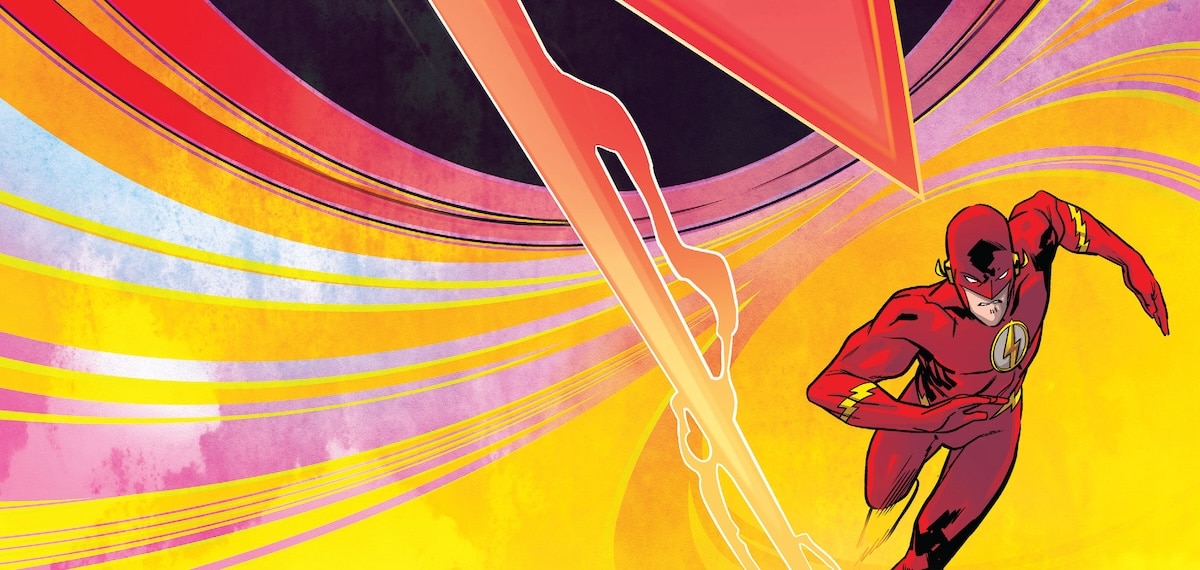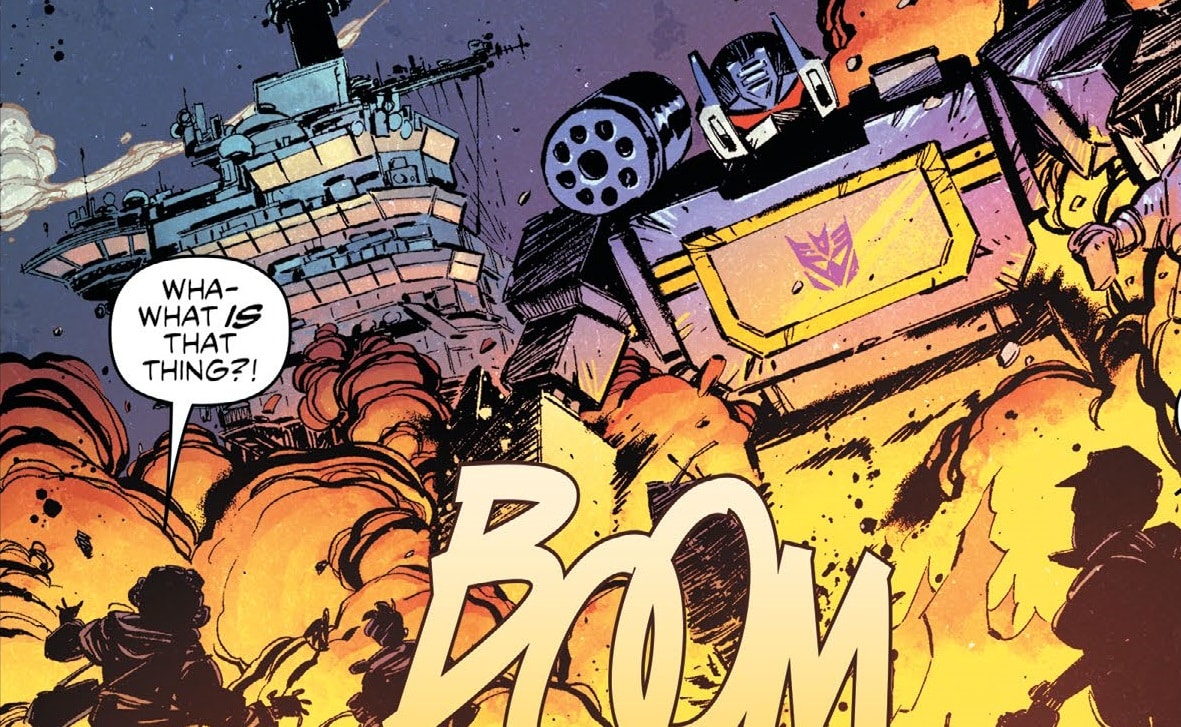THIS WEEK: We continue looking at DC Comics’ MANY releases from 12/18, with Suicide Squad #1, which is the latest book writer Tom Taylor refuses to let suck. Also, Wonder Woman: Dead Earth #1 throws Diana Prince into a broken world.
Note: the reviews below contain spoilers. If you want a quick, spoiler-free buy/pass recommendation on the comics in question, check out the bottom of the article for our final verdict.
Writer: Tom Taylor
Artist: Bruno Redondo
Colorist: Adriano Lucas
Letterer: Wes Abbott
Tom Taylor is a writer who stubbornly refuses to let anything that he does suck. We’ve seen it so many times at this point. The industry seems to throw situation after situation at Taylor that — to be polite — does not quite lend itself to success. A one-off issue of Detective Comics. The fourth Spider-Man comic, the fifth X-Men book during a stopgap era, a concept based on the (bad) storyline of a fighting game. Wave after wave of mostly disposable books comes flying at Taylor, who weathers it, stares it down, and…refuses to let any of it suck.
And now we see that same stubborn refusal again here with a re-launch of the Suicide Squad. Listen, I know the Suicide Squad does not inherently suck. There’s something compelling about villains being made to be heroic, to face down covert government missions and at times have a chance to do good. There’s something intriguing about the way the concept flies in the face of conventions. The team is not public, the team is not willing, the team is often wielded like a shadowy arm of a morally questionable also-shadowy actor. That’s all well and good.
But the way the DC Universe is currently constructed — with every book heading toward climaxes or status quo shifts or whatever — a relaunched Suicide Squad book so close to the dawn of a new DC era is yet another property that seems destined to miss by most comics readers. And yet! Here is Taylor once again, refusing to let this book suck.
Not only that friends, but what Taylor and his artistic collaborators Bruno Redondo and Adriano Lucas have created here is actually quite good. The run will need some time to progress, but this was my favorite start to a Suicide Squad story (not called Copra) in I don’t know how long, possibly since John Ostrander revived and modernized the team in the Legends miniseries. How come? Great question…
Let’s start with the artwork. I thought Redondo, who is colored here by Lucas, operated on a higher level than his part works. I’m specifically thinking of his other Taylor collaboration here, the aforementioned videogame tie-in, Injustice. That art was never bad. I enjoyed it, but this has a more polished feeling to it throughout, evident in both how clean the lines are and other qualities such as panel construction. I especially enjoyed a sequence in which a military official announcing the creation of a new nuclear fleet of submarines is picked up, carried, and brutally dropped onto the same weapons he was moments ago showing off to the press. This is an opening sequence that sort of sets a visual tone for the book, letting readers know that even bright settings and colors are likely to be interrupted by sporadic bursts of extreme violence, in grand Suicide Squad tradition.
My favorite quality of Suicide Squad #1, however, is in the very nature of the setup. Taylor’s strongest ability as a writer (other than that stubborn refusal to let things suck) is that he’s able to mine intrigue and hope from stories that wade fearlessly into bleak darkness. Taylor realizes that the grim-dark content some corners of online fans are so dead-set against is not distasteful because it wants to depict the fearful, harsh, or downright evil parts of life. No, Taylor knows that it’s the way it’s told, and while some of what he does with his scripting is a bit intangible (a panel of well-time interest or levity does wonders to lead an audience through a dark narrative, like gold coins in a dark woods), another part feels deliberate, as if Taylor works to juxtapose the grim-dark content with good that’s happening in the world.
This idea is central to the setup of this new Suicide Squad #1, which pits the team and concept we’ve read for however many years directly against and alongside a new team of idealistic heroes taking up modern causes that young people care about. Characters here are still disposable, the motivations are still primarily about not having a brain bomb exploded, but amid that there are also people who believe the world can and should be a much better place, and the juxtaposition of it all makes for very good comics, comics that absolutely do not suck.
Verdict: Buy
Writer/Artist: Daniel Warren Johnson
Colorist: Mike Spicer
Letterer: Rus Wooton
In the past couple years, writer/artist Daniel Warren Johnson has swiftly become a new favorite of mine. His work first came to my attention with his Image/Skybound maxiseries, Extremity, which depicts (if I remember correctly) a generational war in a madcap, apocalyptic world where life is as frenzied as Johnson’s detailed linework. I next followed him to another Image/Skybound title, with Murder Falcon, which is a far more emotional comic, but one that goes as big with its world-shaking aesthetic as its predecessor. This is all a long way to note that I am a fan, and when news first broke of his new Black Label comic, Wonder Woman: Dead Earth, I was immediately intrigued.
I talked a lot about the power of meaningful juxtaposition in the Suicide Squad #1 review, without realizing while I was writing that that it was also the reason Wonder Woman: Dead Earth #1 worked so well for me, too. In this comic, we get one of the paragon’s of the DC Universe — the empathy-powered immortal Amazon Wonder Woman — put into Johnson’s familiar visions of a world gone wild. To hear him explain it on a podcast (on David Harper’s Off Panel, to be specific), Johnson conceived of this story as a parent-child tale. With Wonder Woman being a caretaker for mankind, who goes away and leaves them to live their own lives (while she is frozen, apparently), before coming back to find the mess they’ve made of everything.
Wonder Woman: Dead Earth #1 is certainly powerful on both of those levels. The juxtaposition comes later, once Wonder Woman wakes up and finds a world of frazzled nerves and easy betrayals, but the the parent idea is there from the start, within a first page that gives us Diana with her own mother, who is showing her that she was molded from clay (my personal favorite Wonder Woman origin). This sweet moment eventually segues into nuclear war, into skeletons being blown away and cities burning. It’s all very writerly and very intriguing.
And that’s really why I liked this comic so much, Johnson’s always-stellar artwork aside. It goes all in on testing its main character in a way I don’t often recall having seen Wonder Woman tested. In fiction, the goal of characterization is often to throw the worst and most personal challenges one can at heroes, giving them a chance to respond and thereby show the audience what they’re made of. What Johnson has done here is land on one of the most frightening obstacles one can put in Diana Prince’s path: it’s not herself that is in jeopardy, it’s the world of man that she has come to know and love and protect. We get all of that done and done well in this first issue, and now the excitement is seeing how she navigates this reality in the three additional issues to come.
Verdict: Buy
Round-up
- If you haven’t read Louie Hlad’s excellent look at Doomsday Clock #12, phew, go ahead and do that now! Louie lays out 6 things Doomsday Clock accomplished, and it’s great.
- Also, just how good are these new Hill House comics? I’m absolutely loving them, and the two that came out last week — Basketful of Heads #3 and Low Low Woods #1 — are a great example of the high level of craft and the variety of ideas this new line is putting out.
- I’m on record calling Superman Smashes the Klan my favorite DC Comic of the year, and Superman Smashes the Klan #2 didn’t change that. What it did do was give Superman more interiority, diving deeper into his own identity as an immigrant to the Earth.
- Fans of Jeff Lemire and Andrea Sorrentino’s excellent creator-owned comic, Gideon Falls, will recognize the abstract visual storytelling at work in Joker Killer Smile #2. The concept — a tight look at the Joker and his psychosis — isn’t the freshest, but the way this story is being told is really interesting and I’m enjoying the heck out of it.
- Finally, there’s a clear over-arching narrative driving the DC Universe right now toward a major shakeup that will eventually yield ramifications throughout the superhero publishing line, and it’s really yielding some great inter-connected storytelling. That much was evident this week in a trio of titles that are all greater than the sum of their parts: Justice League #38, Batman/Superman #5, and Year of the Villain Hell Arisen #1. I know the Scott Snyder-penned Justice League is coming to an end next month, but this feels like the end of Act 2, with a the big BIG climax to come next summer. I’m excited for it.
Miss any of our earlier reviews? Check out our full archive!


